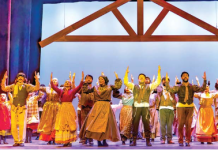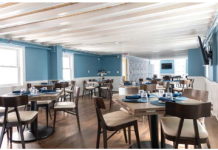By Linda McK.Stewart
The Door to the Desert
The Sahara Desert, about the size of the continental U.S., covers one third of Africa’s landmass.
It extends from the Red Sea to the Atlantic Ocean. It rims the Mediterranean and the Atlas Mountains in the north and stretches down to a band of semi-tropical vegetation known as the Sahel in the south. Formidable, forbidding and vast beyond imagining, the Sahara is one of the most fascinating places on the planet.
Even the briefest glance at a map of North Africa can convince a would-be traveler that the Sahara, for all its immensity, is not easily attained. Reading from east to west, Egypt, Libya, Tunisia and Algeria are all in various stages of political upheaval. Only Morocco, the western-most of the North African countries, promises safe and easy access to the Sahara. Morocco was the first country to acknowledge the independence of the U.S. following the American Revolution. Ever since, strong bonds have existed between our two nations.

At least twice a month Tahar Najoui, Berber born and bred, collects his passengers from one of Morocco’s luxury hotels in Casablanca, Marrakech, Fez, Rabat and any point in between. With luggage expertly stashed in the rear of the spacious, air-conditioned “quad,” Sahara-bound Tahar, 40-ish and Hollywood-handsome, has been escorting visitors to and from the great desert through the auspices of Travel Exploration, Inc. for more years than he cares to admit. It’s a job in which he takes extraordinary pride.
Once upon a time, say 10,000 years ago, the 3.5 million square miles that is the Sahara were lush and green, home to a great diversity of animal life. Crocodiles and other amphibians thrived in ponds and fast-flowing rivers. Antelope, zebra, elephant, musk oxen and all manner of cloven hoof animals roamed grassy plains and found refuge in dense forests. There’s fossil evidence aplenty that this was so, as well as petroglyphs etched by humans who were forever pressing northward from the heart of Africa.
The Sahara is one of Earth’s most scantily inhabited areas. Life in the desert is highly specialized. Mere survival requires skills elsewhere unknown. The desert, like the sea, has many moods and many faces. And, like the sea, its depths are constantly changing. In 420 B.C. Herodotus wrote of a caravan of 2,500 camels and 1,000 men en route from the Far East to the ports of western Africa. During a mid-Saharan sandstorm the entire caravan – men, beasts and goods – vanished without a trace. It disappeared as completely as if it had sunk to the bottom of the sea. Desert voyagers have told of flat expanses of desert sand and rock transformed in mere hours to dunes more than 600 feet high. We can never know what life has been swallowed by the sea, nor do we know what lies forever concealed under Saharan sands.

Tahar, rolling ever southward, passes through a succession of breathtaking landscapes of towering cliffs studded with huge boulders and rushing rivers tumbling into wondrous waterfalls. Trees laden with citrus, olives, persimmons grow wild along arid-brown hillsides. Finally the “quad” rolls into the town of Ouarzazate where moviemaking is a year-round activity. Pickup trucks, mobile homes luxuriously outfitted to accommodate pampered stars of the silver screen and every kind of technical filming vehicle line the busy streets. Jesus of Nazareth, Lawrence of Arabia, Salmon Fishing in the Yemen, Black Hawk Down are but a few of the thousands of movies filmed in and around this area.
At Erg Chebbi Tahar’s passengers swap the comfortable “quad” for what passes as local transportation: the camel, as useful as it is ugly. A desert tour, which can be anything from an overnight to a fortnight’s safari, begins as the riders mount and the camels proceed single file, led by a camel driver. The procession maintains a steady plodding pace, traversing miles of sand, as devoid of landmarks as a seascape. It’s a succession of steep ascents, perilous descents, now heading straight into the sun then inexplicably swerving sharply off in what seems to be the opposite direction.
Journey’s end is a host nomad family living in a bivouac of black low-slung tents – in the middle of nowhere. Not a tree, shrub, roof, or chimney to be seen. Hospitality is generous despite a near impervious language barrier. Meals are plentiful, tasty and magically produced from a fire crackling in a stone-lined pit scooped out of the sand. Casablanca beer is always on hand and so is bottled water. Sleeping is unfailingly comfortable in a tent with mattresses laid on the sand, covered with handwoven blankets and sheepskins. Local children slip their shyness – and faster than their parents – pick up words from the visitors. As darkness deepens, locals gather with oddly shaped string instuments and drums of all sizes. Music, high-pitched and eerie floats up on the ebbing smoke of the fire. Overhead the pitch black sky is pierced by a trillion stars. Sleep comes easily. Welcome to Morocco’s door to the desert!
IF YOU GO: For details about guided tours in the Moroccan Sahara: Travel Exploration, Inc. 1-800-787-8806.














